What Those Little White Bumps Under Your Skin Actually Are And How To Get Rid Of Them
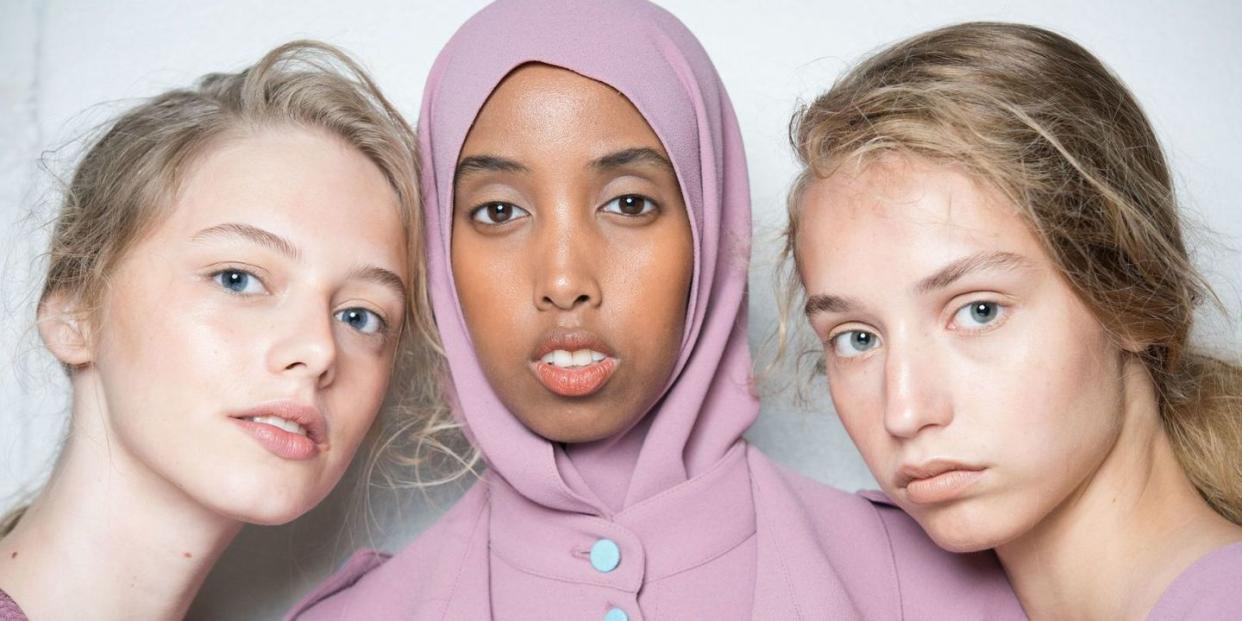
Those hard, white bumps under your skin that just won't let up, no matter how hard you squeeze?
They probably aren't spots.
Often tiny but always annoying, milia can crop up anywhere under the skin, although most of us tend to mistake them for acne clusters or even skin tags.
The good news? There are so many simple ways to stop them from rearing their heads and some seriously effective methods for milia removal if you're late to the game.
Smooth, flawless skin, here we come.
Before you undergo some major milia removal, it pays to know exactly what they are.
Spoiler: Even though they may look similar to whiteheads, they are nothing like them.
'Milia are small white bumps or cysts that appear on the surface of the skin when dead skin cells become trapped,' explains Consultant Dermatologist Dr. Anjali Mahto.
'They are made up of keratin, a protein on the outer layer of the skin, and whilst they resemble whiteheads, they are not related to acne or infection and are simply a pocket of normal skin. They shouldn't be treated in the same way,' she adds.

According to Dr. Anjali, milia on the face are usually formed spontaneously, and there are a number of factors that contribute.
'Milia found around the eye area can be caused by heavy creams, where the skin around the eye is much thinner than other areas of the face,' adds Dr. Anjali.
But they can also crop up elsewhere.
'Milia can also occur on the nose and other areas of the body,' she says. 'They tend to occur as a result of skin damage - predominantly sun damage - as well as rashes and excessive use of harsh products on the skin.'
Dealing with milia might feel like a never ending battle, especially as you can't satisfyingly squeeze them like spots.
Here's how to remove milia for good:
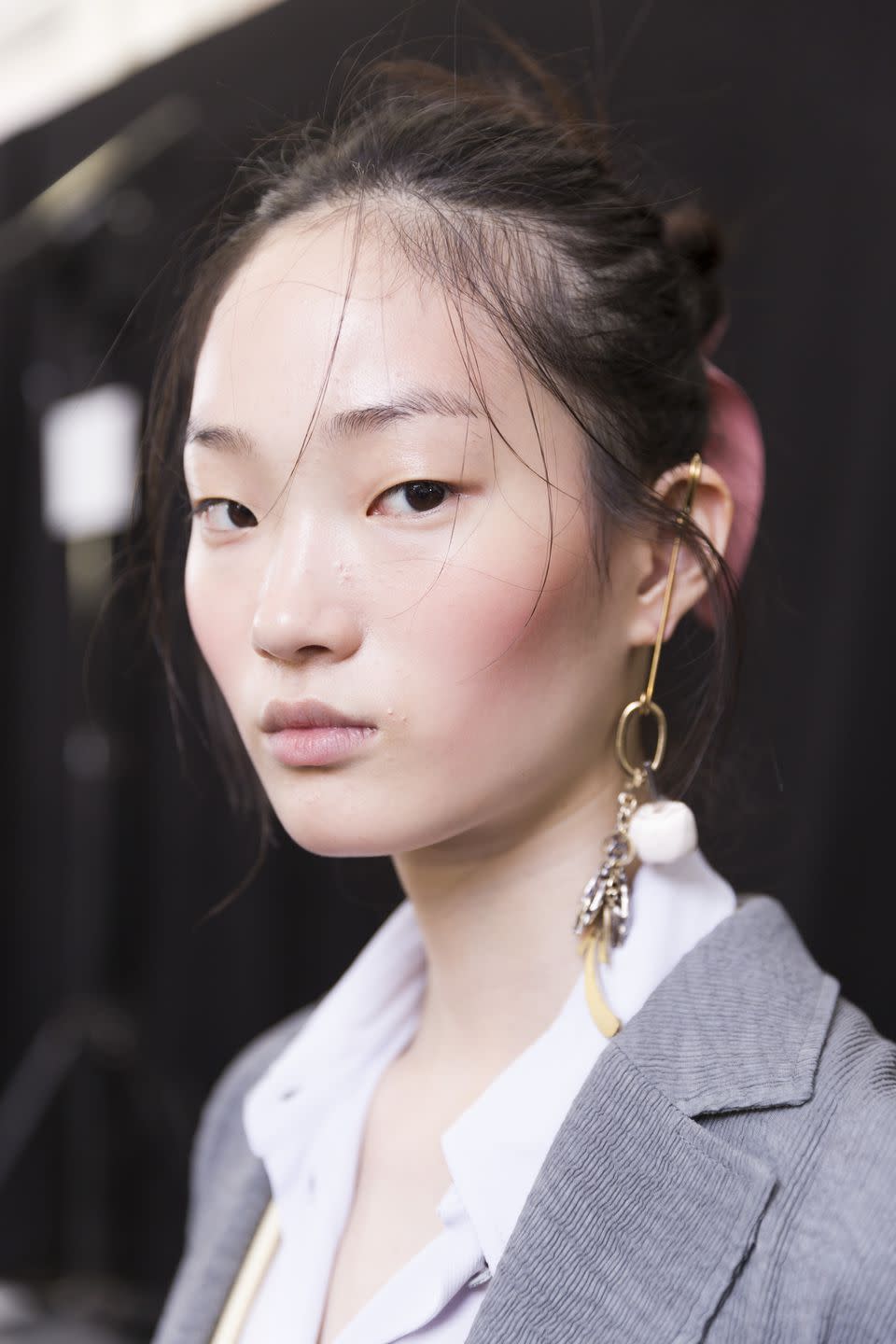
1. Gentle Exfoliation
There are endless benefits to exfoliating your skin, including: minimising hyper-pigmentation, banishing blemishes and reducing superficial acne scarring - and seeing as milia are a result of trapped skin cells, exfoliation is brilliant at keeping them from springing up, too.
'[Gentle exfoliation] allows the dead skin cells to be removed, resulting in much less build up,' explains Dr. Anjali.
'It also allows for moisturiser to penetrate the skin further,' she adds, which means you'll get a hell of a lot more out of your luxury skincare arsenal.
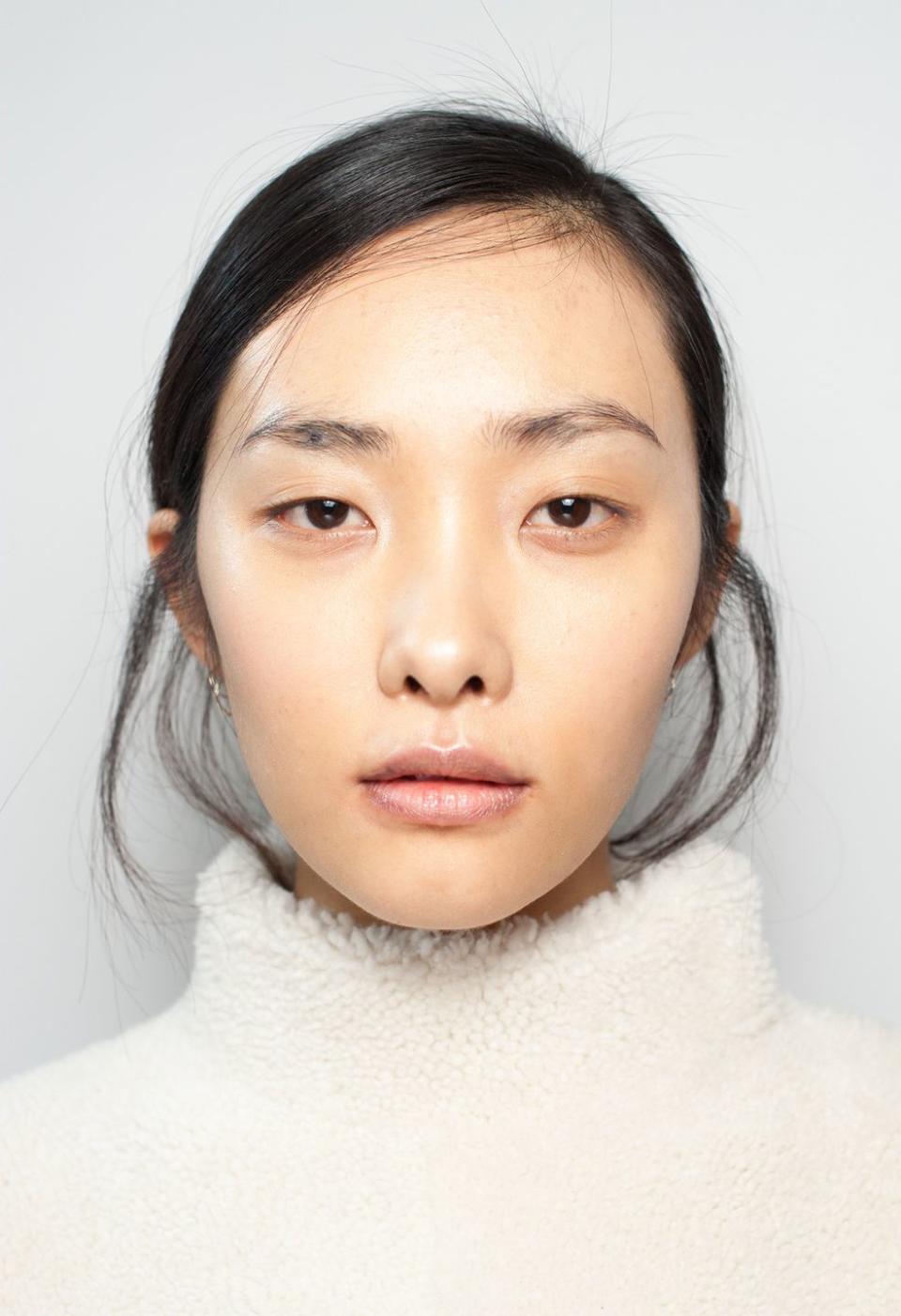
2. Chemical Peels
Superficial peels containing AHAs and BHAs, including glycolic and salicylic acid, provide accelerated, chemical exfoliation without the need to aggressively scrub your skin.
Non-abrasive, they only lift off the top layer of skin, ensuring the skin is 'clean and fresh,' according to Dr. Anjali. And fewer dead cells = fewer unsightly bumps.
Can't make it to a professional clinic? At-home face peels are gaining traction among those on a quest for clearer, more refined skin, and with high concentrations of exfoliating ingredients like lactic and glycolic acid, the de-congesting, complexion perfecting results are pretty much undeniable.
The best part? There's zero downtime.
We earn a commission for products purchased through some links in this article.
Try...
- The Ordinary AHA 30% BHA 30% Peeling Solution - £6.25 SHOP NOW
Don't let the vampy red solution put you off. This boasts both AHAs to slough away the top layer of skin and BHAs to exfoliate on a deeper level. The result? A brighter, smoother complexion.

- Natura Bisse Glyco Extreme Peel - £214 SHOP NOW
Glycolic and lactic acid in Natura Bisse's weekly treatment unclogs skin, fades blemishes and refines skin texture. It makes such a visible difference, even after one go.

3. Ditch Heavy Creams For Lightweight Textures
If milia tend to cluster around your eye area, it could have something to do with the texture of your skincare products. That super-luxe eye cream you just splurged on? It might be doing your skin more harm than good.
Applying thicker creams to thin and delicate areas of skin has the potential to both block the pores and to trap dead skin cells - cue an army of pesky under-the-skin bumps.
The solution?
Try...
- Dr. Levy Switzerland Eye Booster Concentrate - £165 SHOP NOW
Cell-boosting retinol, hydrating hyaluronic acid, peptides and vitamins... This feather-light eye serum is pretty much unrivalled when it comes to blurring fine lines and puffiness, and it absorbs in a matter of seconds. Obsessed.

- Teoxane R[II] Eyes - £45.85 SHOP NOW
We love the lighter-than-light gel-cream texture of Teoxane's hyaluronic acid-packed, skin plumping eye treatment and the curved metal applicator has a cooling effect on the skin, helping to iron away bags like no other.

4. Incorporate Retinol Into Your Night-Time Routine
Retinols (vitamin A derivatives) are brilliant at kick-starting cell turnover, and less layers of dead skin results in fewer obstructions, fewer white bumps and a more even, flawless skin texture.
And although retinol has bit of a bad rap in skincare for turning complexions flaky and red, there are gentle yet effective formulas out there.
Bumps, be gone.
Try...
- Medik8 Retinol 3 TR - £29 SHOP NOW
Beauty journos can't get enough of Medik8's Retinol 3 TR, and for good reason. It has a high concentration of skin-smoothing, collagen-boosting vitamin A but works its magic with minimal irritation. There's also a 10 TR, (1% and a great option for those whose skin responds well to higher-strength retinol).
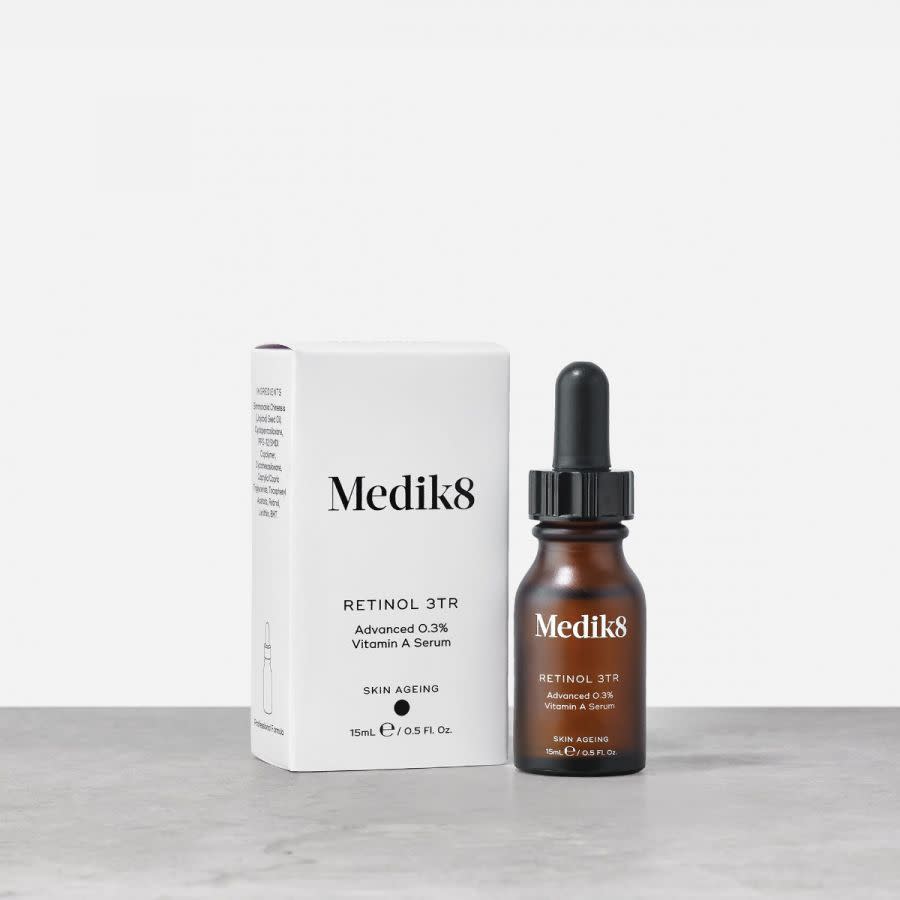
- The Ordinary Granactive Retinoid 2% Emulsion - £8 SHOP NOW
The 2% retinoid in this non-sticky night-time serum encourages cell turnover at lightning speed. Stick with it to see clearer, smoother skin. We apply it all over.

5. Professional Extraction
'There are many tried and tested treatments available for the removal of milia,'explains Dr. Anjali, 'however one of the most common is by using a sterile needle to create an incision in the skin, making way for careful extraction.'
But to avoid infection and scarring, it's best not to attempt it at home without consulting a professional first.
'The treatment should be undertaken by a qualified dermatologist,' stresses Dr. Anjali. 'They will be able to recommend the best way of extracting the milia. The best type of treatment will also depend on the type of milia you have, as well as the number and location on the face.'
Gotcha.
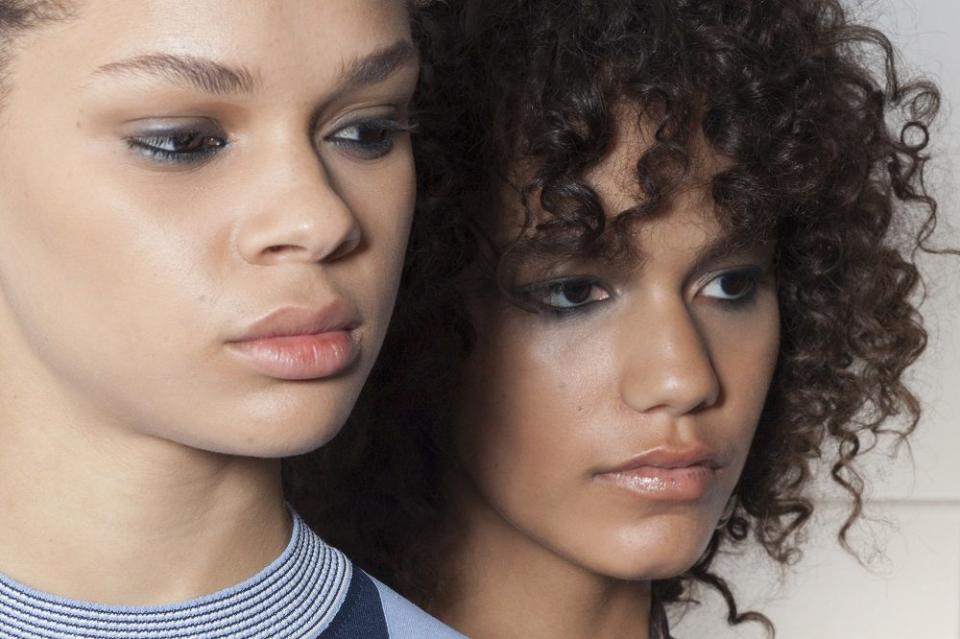
6. Avoid Increased Sun Exposure
This one is a given, but according to Dr. Anjali, increased sun damage and milia go hand in hand - not cool when you're on the hunt for flawless skin.
At the risk of sounding like a broken record, incorporating an SPF into your morning skincare routine is just as important in the winter months as it is in the summer, especially if you're using peels or exfoliators containing acids, as they can make your skin ultra-sensitive to UV.
Hate the greasy, chalky feel most SPFs lend your skin?
Try...
- Heliocare Advanced SPF 50 Gel - £19 SHOP NOW
Ultra-light and comfortable, this protects and hydrates without leaving behind a greasy film or an ashy finish. If you have blemish-prone skin, stockpile it.
- La Roche-Posay Anthelios XL Ultra-Light Fluid SPF 50 - £16.50 SHOP NOW
Perfect even under make-up, this non-comedogenic, high-factor SPF prevents UVA and UVB rays from casting dark spots on your skin.

7. Book In For An Electrodessication Treatment
We know what you're thinking: Electrodessi-what?
But if you've been down the exfoliation, chemical peel and retinol route to no avail, you might want step up your game and book in for a professional milia-zapping treatment.
'This process uses electricity [and a fine metal electrode or probe - not as terrifying as it sounds, promise] to heat the skin and to destroy the milia,' explains Dr. Anjali - but don't worry, it's done under a local anaesthetic cream to minimise any twinges.
Crystal clear skin? Yes please.
('You Might Also Like',)


